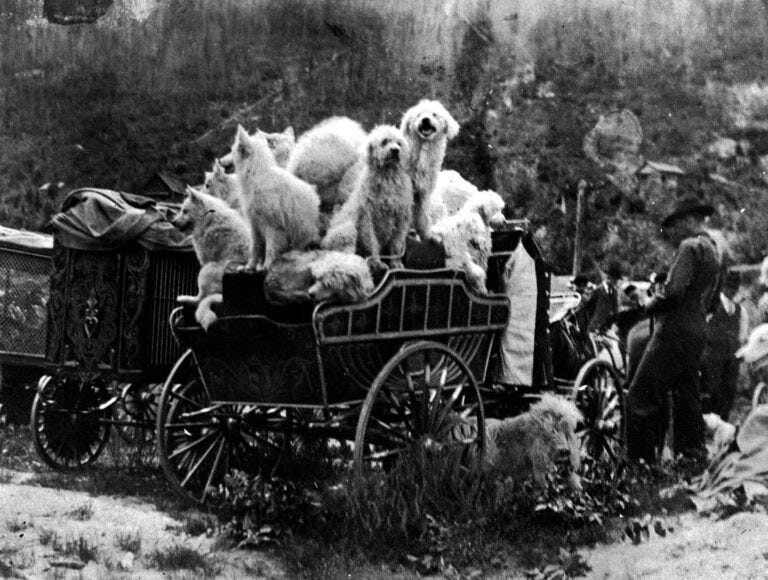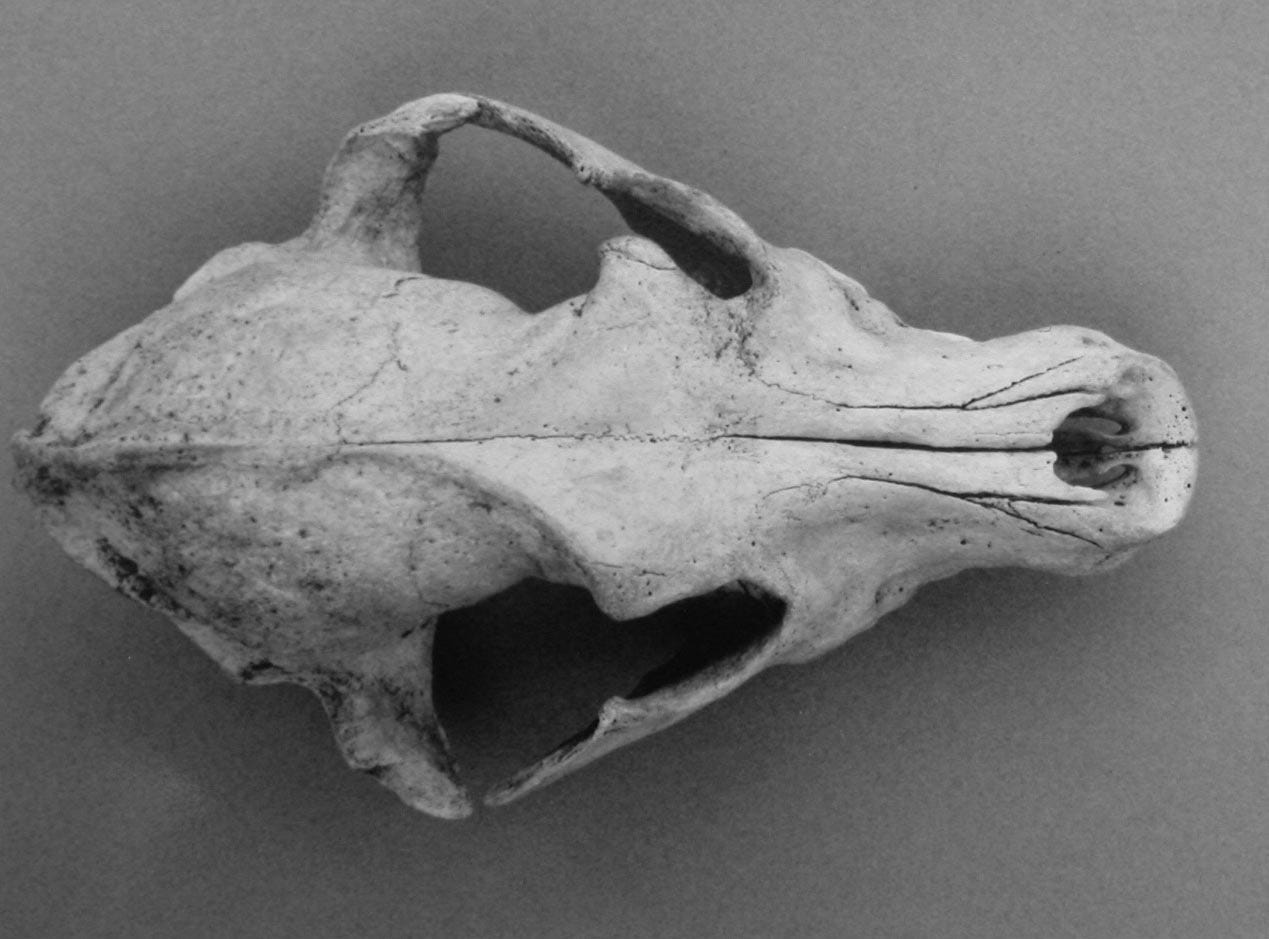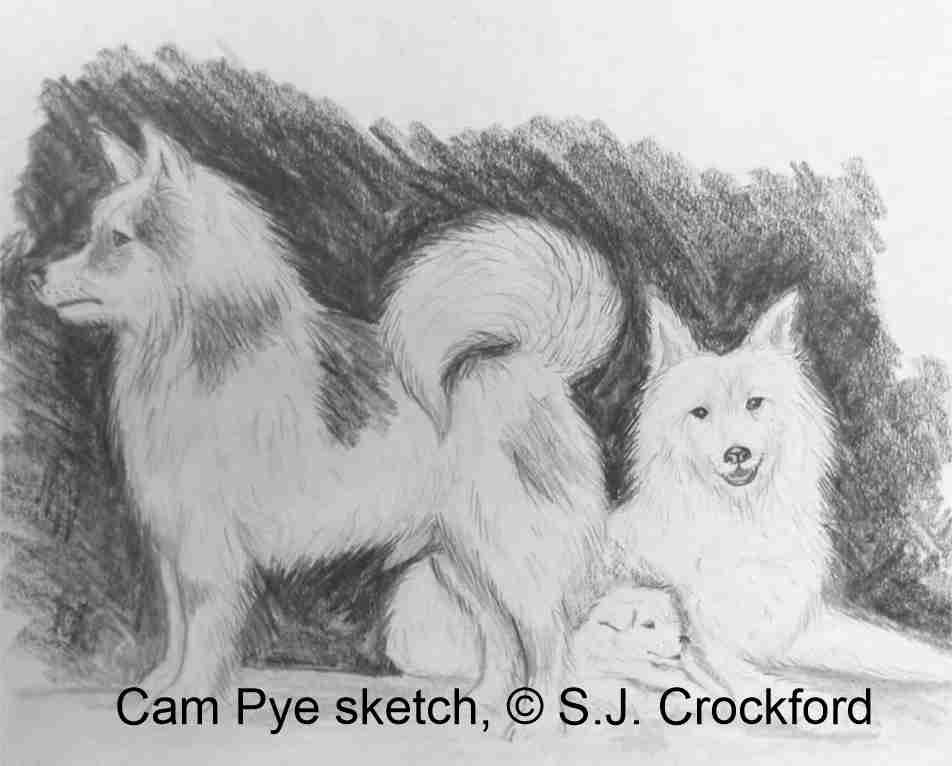When and why did NW Coast Wool dogs become extinct?
One dog with European ancestry generates a tale of cultural genocide
The story of the unique Northwest Coast Wool dog, the only well-documented native dog breed present in North America, was seemingly shattered in 2023 by a surprising paper published in Science.
As I described in my last essay, by 1858, the unique Wool dog described by early Europeans in the late 1700s was considered extinct by reliable observers because First Nations weavers abandoned the production of dogs’ wool blankets in favour of colourful Hudson’s Bay Company point blankets. As dogs’ wool blankets lost their appeal, and then their value, the women in charge of weaving temporarily stopped keeping Wool dogs from mating with local, short-haired Village dogs and the odd European dog that might come around. In very short order, the Wool dog as a distinct breed had disappeared.
However, a controversial paper published late last year in Science by geneticist Audrey Lin and more than 20 co-authors, came to the shocking conclusion that the breed did not disappear until the mid-1900s. They further contend that the Wool dog went extinct only because central NW Coast First Nations and their culture, and especially female weavers with Wool dogs, were the victims of persecution by Europeans.
It appears that taking the extremely limited genetic results generated by the analysis and framing it within this particular social context was enough to get the paper published rapidly in a high-profile journal that rejects 93% of submissions. Less than two years after learning about Wool dogs for the first time in early 2021, Lin and colleagues got funding, did all of their analysis and research, wrote and submitted a finished manuscript, and had it accepted for publication in Science by October 25, 2023.1
The Lin “woolly dog” paper
Audrey Lin and colleagues attempted to pull as much biological information as possible from the preserved pelt and lower leg bones of a dog called “Mutton” stored at the Smithsonian’s Natural History Museum, which Lin read about in February 2021 in a Hakai Magazine article written by Virginia Morrell.2 She admitted she’d never heard the Wool dog story before that time, or knew about the existence of Mutton.
Mutton seems to have been acquired in 1858 by a US government naturalist and ethnographer working in the area around Chilliwack, in southwest British Columbia east of Vancouver. The dog died in 1859 and its skin was subsequently tanned and donated to the Smithsonian. Based on the lower leg bones, Mutton was larger than most putative prehistoric Wool dogs measured so far from Makah and Coast Salish Territory.3
The pelt of a Village-dog-sized animal was also collected for the museum in 1858, which came from the Blaine, Washington area, and was also sampled for its DNA. Although this dog also had long hair, the authors decided it was probably a Village dog because it wasn’t “woolly.”
Oddly, this Blaine specimen was the only NW Coast aboriginal dog used to compare genetically to Mutton, apparently because no pre-colonial native dog specimens from this region were held at the Smithsonian. Published genetic sequences of ancient dogs from other regions were used instead, as were some modern dog sequences.
Lin and her co-authors seem to have assumed that the Wool dog extinction issue was exclusively about interbreeding with European dogs, and not about inadvertent mating with short-haired Village dogs.
In other words, the authors had no DNA from precolonial specimens from the Makah and Salish territory of the Northwest Coast – of either Wool dog or Village dog-sized animals – with which to compare the Mutton genetic samples.
They could have waited to publish their work until they had these essential samples, which exist in abundance, but it seems they had a message to convey about the effects of colonialism on First Nations culture that was too compelling to delay.
On page 1307 of the paper, for example, under the heading “The impact of colonialism on the iconic breed’s disappearance,” the authors state:
Survival of woolly dogs depended on the survival of their caretakers. In addition to disease, expanding colonialism increased cultural upheaval, displacement of Indigenous people and a diminished capacity to mange the breed….In the 20th century, transference of cultural knowledge was further disrupted by mandatory residential schooling designed to remove children from their families and suppress culture.
Immediate publication allowed the authors to leap-frog off the false narrative of unmarked graves at residential schools in British Columbia that had been circulated relentlessly by the media since 2021.4 Corporate media embraced Lin and colleagues’ story that yet another First Nations victim of oppression existed and presented it unchallenged.5
Senaqwila Wyss (Squamish Nation), co-author of the paper and Indigenous cultural programmer at the Museum of North Vancouver, told the CBC in a July 21, 2021 interview: “The Salish woolly dogs were part of the colonial genocide that happened.” Lead author Audrey Lin told the CBC in December 2023, that their study highlights the "direct and devastating'' impacts of colonialism.
However, the team’s genetic analysis showed clearly that both dogs collected in 1858 were a mix of aboriginal dog and European breeds. At least one of Mutton’s ancestors was a European dog and the rest of his ancestry was described as generic “pre-colonial dog.” That is, there was no unique “Wool dog” genetic signature identified.
The existence of the European ancestor rules out Mutton as a member of the Wool dog breed described in the historical records, if one accepts, as I do, the standard definition of a distinct breed as a closed genetic lineage.
Despite this result, the authors concluded that Mutton was a Wool dog, by virtue of having long hair and possessing generic aboriginal dog DNA.
Based on this decision, the authors further insist that the last Wool dogs (i.e., any long-haired dog treated as a Wool dog or called a Wool dog by First Nations informants, even if it had European ancestry) did not die out until about 1950. This conviction appears to be based in part on photos from the early to mid-1900s of animals identified as Wool dogs.
Some of these photos are listed in the supplemental material, and the authors and others have convinced the media these are some of the last living Wool dogs.
Similarly, there are also stories passed down from elders included in the paper and shared with news reporters, which are presented as evidence that Wool dogs did not go extinct in 1858. These stories all relate to dogs or activities that took place in the early 1900s or the late 1800s at the earliest.
However, anthropologist Grant Keddie, former curator at the Royal B.C. Museum, has repeatedly refuted claims that these photos and stories represent actual Wool dogs described by early 19th century ethnographers and explorers.6
For one thing, few of the photos match the descriptions of early 19th century Wool dogs, which were consistently described as spitz-like. The photos in the museum archives are instead simply white dogs of various shapes and sizes. Small white dogs of various breeds were very popular with Europeans at that time, including those living in the Coast Salish region.
According to Keddie, the wagon load of small white dogs in the photograph below exemplifies this popularity: these animals are shown travelling with a dog circus at Trail, British Columbia about 1915. A similar circus apparently came to Victoria, on southern Vancouver Island, on September 16, 1860.

Keddie notes that many lines of evidence, backed up by reports and photos held in the museum’s archive, point to a dramatic decline in numbers of Wool dogs by 1855 as Hudson Bay Blankets rose in popularity and the value of Wool dog blankets plummeted.
And while some First Nations communities may have realized by the late 1800s or early 1900s that they had relinquished something to be cherished and worked hard to get it back, if they were using dog wool for weaving rather than sheep’s wool, it was almost certainly material taken from a genetic mongrel like Mutton – a Wool-dog substitute – that couldn’t possibly have been a member of the original Wool dog breed that existed in the pre-colonial period.
First Nations weavers and elders interviewed for the paper apparently took umbrage at the notion that their female ancestors would have given up weaving traditional Wool dog blankets and caring for Wool dogs just because colourful and warm sheep’s wool blankets could be purchased cheaply from the Hudson’s Bay Company. However, the documented evidence described by Keddie, which goes beyond the memories of the sharpest elders, indicates otherwise.
Oddly, one of the paper’s co-authors, Coast Salish spinning and textiles expert Liz Hammond-Kaarremaa [not a typo], also told CBC News in 2023 that the “Coast Salish woolly dog” had a “sharp, fox-like face.”
However, not a single putative Wool dog skull I have examined from the pre-colonial period could be described as being as elongated and narrow as a fox. All specimens that are Wool dog-sized are rather short and broad in the snout, like the skull in the image below.

Why this bothers me
Overall, I was left with the impression that the primary purpose of the Lin Science paper was not to present any definitive scientific evidence about the genetic nature of the Wool dog based on one specimen collected in 1858, but rather to add to an existing narrative of colonial persecution of First Nations culture.
While it is absolutely true that First Nations people in Canada have some valid complaints about their treatment by Europeans during the early colonial period and into the 20th century, many people will only believe that the extinction of the Wool dog on the NW Coast is part of a general pattern of deliberate cultural genocide because it piggy-backs on false but widely circulated media stories of unmarked graves of residential school children in central British Columbia.
Instead of new scientific evidence to address the question of whether or not the Wool dog described in the late 1700s and early 1800s was indeed a unique North American dog breed, which I would have welcomed, we got a barely-credible narrative of colonial oppression.
It shouldn’t matter to anyone if First Nations women in the late 1800s or early 1900s decided that any long-haired dog could be a suitable substitute for the “woolly dog” used in their traditional weaving. I certainly accept that this was their reality, and also that the keeping of “woolly dogs” in that period was as much about the companionship value of the animals as it was about the production of wool.
However, given the DNA evidence of European dog ancestry, the Mutton specimen cannot be said to be a representative of the same Wool dog breed that seems to have existed in pre-colonial times and which I spent two decades investigating; geneticists shouldn’t be asking anyone to accept that it is.
NOTE: My podcast of this 2-part essay is available for paid subscribers here.
See the “information and authors” sidebar at this link https://www.science.org/doi/10.1126/science.adi6549
Lin, A.T., Hammond-Kaarremaa, L., Liu, H.-L., et al. (2023). The history of Coast Salish “woolly dogs” revealed by ancient genomics and Indigenous Knowledge. Science 382:1303-1308. https://www.science.org/doi/full/10.1126/science.adi6549 See also the Supplementary data. Paywalled: contact me for a copy of the paper
Crockford, S.J. (1997). Osteometry of Makah and Coast Salish Dogs, Archaeology Press #22, Simon Fraser University, Burnaby, B.C.
McKechnie, I., Moss, M.L. and Crockford, S.J. (2020). Domestic dogs and wild canids on the Northwest Coast of North America: animal husbandry in a region without agriculture? Journal of Anthropological Archaeology 60, 101209.
Terry Glavin, “The year of the graves: How the world’s media got it wrong on residential school graves.” National Post, May 26, 2022. https://nationalpost.com/opinion/the-year-of-the-graves-how-the-worlds-media-got-it-wrong-on-residential-school-graves, this Substack report, and this August 9, 2022 Youtube interview with Megan Murphy
The press release issued by the American Museum of Natural History (Dec. 14, 2023), states: But Mutton’s genetics could not tell researchers about what caused the dogs to decline. The authors suggest that it likely became increasingly difficult or forbidden for Coast Salish communities to maintain their woolly dogs after European settlers arrived, because of the introduction of diseases and colonial policies of cultural genocide, displacement, and forced assimilation.
Keddie, G. 1993. Prehistoric dogs of B.C.: wolves in sheep’s clothing. The Midden 25(1): 3-5.
Keddie, G. 2023. Mistaken indigenous wool dogs. Blog post, 3 June. https://grantkeddie.com/2023/06/03/indigenous-wool-dogs/





I was amazed when my Science Journal arrived with the Lin et. al. article on wool dogs. I asked myself, how did this get published and who reviewed it?
I started out getting my own DNA markers analysed over 20 years ago and added to them on a continual bases until the millions that I have now. In my extensive examination of this over the years, I have become aware of what the nature of sample size and sample origin can and cannot do. I read the increasing volume of published paper as I prepared to give talks on the peopling of the world based on DNA.
One of the trends I noticed is the lack of knowledge about genetics among anthropologists and the lack of understanding of anthropology among geneticists. Fortunately, this has improved with larger teams of people with expertise in both subject areas writing papers together.
I could see in the Lin et. al 1923, paper that some conclusions were not evidenced based. I also see a stereotype about Indigenous people that comes out in this paper, as it has in so many others. The colonialist view in the 19th century is that the cultures of indigenous people were inactive, unchanging primitive cultures since the beginning of time. Today, It is too frequent that broad statements are made about the relationships between Indigenous and non-Indigenous peoples that cover the last 150 years. It is important to examine history in smaller time sequences to understand the processes of change. And especially to understand the active role of Indigenous peoples in those processes.
During the early fur trade period from 1774 to the early 1800s, there were no non-Indigenous settlers. Some Indigenous people killed the first Europeans than came ashore, they chose not to trade. Others voluntarily began to trade. They wanted the European trade goods, especially ones that made their lives easier, such as iron knives and adze blades. Many intelligent Indigenous leaders quickly caught onto the value of European trade goods. There are many complaints in the fur trader’s journals about Indigenous people continually raising their price for the exchange of goods and how they played one trader against another.
The archaeological evidence, clearly shows that Indigenous people had been trading for thousands of years with their neighbours and other strangers living long distances away. Indigenous cultures were, and still are, dynamic and changing.
The role of wool dogs in Indigenous cultures on the southern coast of B.C. was not likely affected during the early fur trade, even with the depopulation that occurred with smallpox spreading from the Atlantic coast from the west side of the Bering Strait before European settlement in the 1780s.
The next fur trade period where Europeans and other non-local Indigenous people formed settlements around fur trade posts and the massive influx of people, along with introduced dogs, in 1858 is where drastic changes in traditional practices of dog ownership would have changed.